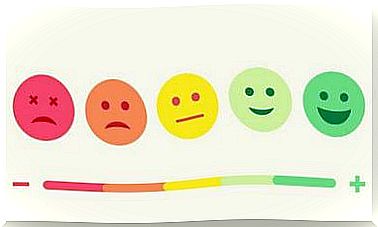Paradoxical Intention, Contradictory Technique

Paradoxical intention is a therapeutic technique that aims at contradiction and absurdity. The objective of this tool is to trigger in the patient attitudes that on other occasions he would tend to avoid, and which turn out to be the core of his malaise and discomfort. In these cases, the contradictory nature of this tool can prove extremely useful.
Starting from the chapter on the paradoxical intention of Salgado, Gómez and Yela included in the manual Técnicas de Modificación de Conducta (“Behavior modification techniques”) by the author Francisco Labrador (2007), we will try to understand which mechanisms must be put in place to making paradoxical intention a very valid technique to promote change in therapy.

The goals of the paradoxical intention
In many cases of psychological disorders, especially those related to anxiety or obsessive-compulsive disorders (OCD), the technique of avoiding obsessive thoughts, rituals and feelings of distress at all costs is not only useless, but does than magnify the problem.
A person with compulsive rituals, for example, can implement a behavior and impulse control technique which, considering the spontaneity of the same, can prove to be dubious and ineffective. In light of this, according to Salgado, Gómez and Yela, the paradoxical intention is aimed at:
- Making the individual give up seeking control over automatic and spontaneous responses (trying not to feel anxiety, not to realize his compulsions …).
- Make the subject strive to make the symptom appear even in situations other than those in which it usually appears, causing all the worst consequences to arise. For example, during the session a person with generalized anxiety disorder may be asked to have an intense anxiety attack, with a powerful cry and total loss of control.
How can the effect of paradoxical intention be explained?
There are various theoretical models that try to explain how the effect of paradoxical intention is achieved. Some of these are:
- The double bind theory: when two simultaneous and mutually exclusive messages are presented, one responds to one or the other. When an anxious person is asked to produce an emotion that they usually feel spontaneously, two options appear: anxiety can present itself, and in this case the patient will be asked to enhance it rather than, as they normally would, to control it or reduce it (automatism), or anxiety does not appear.
- The theory of symptom decontextualization : when a person is asked to trigger the anxiety attack in session, the context in which he finds himself is totally different from that in which it would normally occur.
The symptom thus loses its meaning. For example, if a person with compulsive repetition attitudes puts them into action without responding to real anxiety states or without the will to remove obsessive thoughts, the ritual consequently loses meaning as it is out of the normal context.
- The theory of recurrent anxiety: according to the authors, provoking a behavior and at the same time fearing it are not compatible attitudes. Paradoxical intention is useful when a person anticipates their symptom. For example, people with sleep disorders often cannot sleep due to anticipatory anxiety and fear of not sleeping. The will to stay awake (paradoxical intention) eliminates the anticipated fear of not being able to sleep and this promotes sleep.
The hidden exposition in the paradox
The paradoxical intention also allows exposure to the patient’s feared behaviors, which continue to manifest themselves because they try to avoid them. This phenomenon is present in most anxiety disorders, in which a vicious circle is activated whereby anxiety is fueled by the attempt to avoid it.
This technique is especially useful for people who are afraid of experiencing anxiety. For example, they anticipate that they will lose control once they get on a plane, enter the cinema or go to the city center during busy times, contexts in which anxiety may never have occurred before. But the very anticipation of anxiety can favor its onset.
In controlled settings, it is more difficult for the person to have an anxiety attack at the request of the therapist. As therapy progresses, however, one can try asking the patient to have an anxiety attack at the supermarket; to speed up your heart rate or breathing.
In this way, it is possible for anxiety to appear, but in a controlled situation. The individual has chosen when to make it appear and under what circumstances. From this point of view, the paradoxical intention is useful for the person to expose himself to his anxiety and to the fears that trigger it and that prevented him from doing what he feared.

Conclusions: not all paradoxes hold true
The paradoxical intention is not simply to tell a person “trigger your anxiety”. A generic education of this type will not lead to good results.
The therapist will need to be very specific in explaining the task to the patient. The conduct must be made clear, specifying what exactly he must do, in what place and for how long. For this reason, as Salgado, Gómez and Yela explain, it is much better to give concrete indications rather than vague suggestions. Eg:
- Instead of saying “ask your daughter to play a tantrum”, it is better to “ask your daughter to scream as loud as she can and stamp her feet before turning off the television.”
- Instead of saying “trigger your anxiety”, it is better to “try to make your heart beat faster, to increase your palpitations and even your body temperature”. Several techniques may be suggested for this purpose.
- Rather than saying “do something you generally would not do before having a seizure”, it is preferable to “put on lipstick before having an anxiety attack”.
Being specific and making the patient understand behaviors can make the difference between the effectiveness and the failure of the treatment in the therapeutic context.
We remember that it is a very powerful technique, but also dangerous, for this reason it must be applied in a structured and oriented way in order to avoid that the results produced are contrary to those desired.









